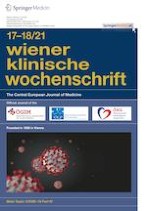Introduction
Methods
Patient cohort
Measure | Date of implementation/time period |
|---|---|
Formation of hospital staff cohorts – 1st wave | 15 March–31 May 2020 |
– 2nd wave | 02 November–07 December 2020 |
Separate access for patients with structured triage by healthcare professionals | 16 March 2020—ongoing |
Provision of masks and protective gear to hospital staff and patients | 16 March 2020—ongoing |
Implementation of hygiene recommendation to test all patients for SARS-CoV‑2 | 23 March 2020 |
Implementation of a 2-week basis for SARS-CoV‑2 retesting – Testing at the visiting unit | 21 March 2020 |
– Testing at central testing unit | 05 August 2020 |
Implementation of the hygiene recommendation to test all patients the day before a visit | 23 March 2020 |
SARS-CoV-2 testing
Statistical analysis
Results
Patient characteristics
Characteristic | Cancer cohort (n = 1577) | |
|---|---|---|
n | % | |
Gender | ||
Male | 664 | 42.1% |
Female | 913 | 57.9% |
Age at SARS-CoV‑2 testing | ||
Median, years (range) | 63 (18–93) | |
Anti-neoplastic treatment | ||
None | 617 | 39.1% |
Chemotherapy | 380 | 24.1% |
Targeted therapy | 345 | 21.9% |
Immunotherapy | 111 | 7.0% |
Chemotherapy and targeted therapy | 84 | 5.3% |
Chemotherapy and immunotherapy | 32 | 2.0 |
Targeted therapy and immunotherapy | 8 | 0.5 |
Metastases | ||
Present | 802 | 50.9 |
Absent | 775 | 49.1 |
Number of hospital visits per 4 weeks | ||
Median (range) | 2 (1–12) | |
Number of SARS-CoV‑2 test per 4 weeks | ||
Median (range) | 1 (0–11) | |
SARS-CoV‑2 test performed | ||
Yes | 1.079 | 68.4 |
No | 498 | 31.6 |
SARS-CoV‑2 infection detected | ||
Yes | 23 | 1.5 |
No | 1.554 | 98.5 |
